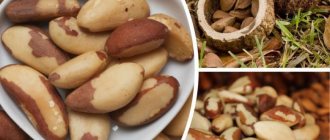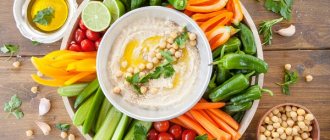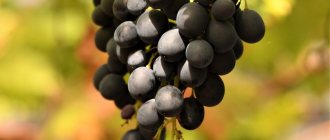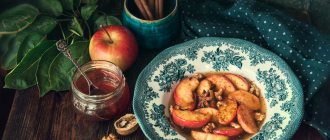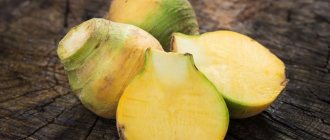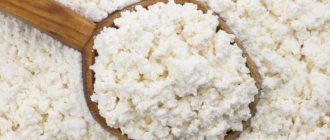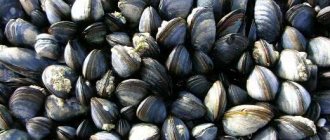How to choose a fresh coconut and check its quality
When buying a coconut, you need to inspect its shell.
- It should not be covered with dark spots and mold.
- There should be no cracks on it. They indicate that the liquid has poured out of the nut, and it itself, most likely, has already begun to rot from the inside.
- The stem area should be firm and not pressed in.
- When buying a coconut, take the largest and heaviest specimen. This one has already matured and fell from the palm tree. It has a lot of pulp.
- A quality nut should contain liquid, the presence of which can be easily determined by shaking the fruit.
Purchased coconut can be stored in a cool place for up to one month, but it is advisable to purchase the fruits immediately before use.
How to open a coconut
You will need a medium-sized sharp knife or hammer. If the coconut is young and smooth, take a knife and cut off a small part where the branch grows, over and over again, as if you should get a triangle or square. A hole will appear into which you insert a straw and drink the juice.
More ripe fruits cannot be cut this way. Here you will have to tap the tip of the knife first from above (vertically) into the flesh, and then towards the slot in the horizontal plane. As if cutting off a slice or a quarter from the top. Until a hole appears. And again, insert a drinking straw.
The photo shows an old ripe coconut.
The old brown fruits of the coconut palm are the strongest (we see them in stores). For example, local residents do not stand on ceremony, but simply beat it on the floor until a crack appears, from which the juice is drunk. If this barbaric method does not suit you, take a hammer and knock on the coconut in a circle. But first, you need to poke a couple of holes in the dark eyes of the brown fruit with a knife and drink the juice. After the coconut water has been drunk or drained, open the shell. The easiest way to do this is to insert a knife into the crack and, using pressure, split the durable nut into two parts.
Here are a couple of videos on how to open a coconut:
And here is a video of how to open an old coconut at home with a knife in 20 seconds:
Composition, calorie content, nutritional value and glycemic index
The calorie content of coconut is quite high: in fresh pulp there are 354 kilocalories per 100 g of product, and in dried pulp it increases to 592 kilocalories.
The weight of one nut is from 2 to 4 kg, so it’s easy to calculate the calorie content of each specimen.
Glycemic index - 45.
Nutritional value per 100 g of product:
- proteins – 3.3 grams;
- fats – 33.5 grams;
- carbohydrates - 15.2 grams;
- dietary fiber – 9 g;
- water – 46.99 grams.
The fruits contain the following beneficial substances:
- Vitamins: A, E, C, PP, group B.
- Macro- and microelements: potassium and magnesium, calcium, manganese, sodium, iron, phosphorus, selenium, copper and zinc.
- Essential and non-essential amino acids.
- Unsaturated and saturated fatty acids.
We recommend reading: Peanuts - benefits and harms for the body of women and men
Benefits of fresh coconut
When consumed in moderation, coconut is an extremely healthy food. Coconuts are needed for:
- prevention of diseases of the genitourinary and nervous system;
- saturation of diet with fats during diet and vegetarian diet;
- normalization of hormonal levels, including by maintaining the health of the thyroid gland;
- activation of the body's immune functions;
- prevention of diseases of blood vessels, heart, joints.
What are the health benefits of coconut and what harm can it cause to health?
Coconut has a strengthening, antimicrobial, anti-inflammatory, anthelmintic, diuretic, antipyretic, cleansing and antioxidant effect on the body.
Thanks to these qualities, coconut can be used for:
- Strengthening the immune system.
- Stimulates the work of the heart muscle.
- Regulation of the gastrointestinal tract.
- Treatment of diarrhea.
- Reducing cholesterol levels.
- Colon cleansing.
For men and women
For these categories of people, the permissible daily intake of coconut will only bring benefits. It contains amino acids that are poorly produced by the body with age.
Its regular inclusion in the diet will increase performance, restore vision, strengthen bone tissue and teeth, cleanse blood vessels and the entire body, and normalize digestion.
Is coconut harmful for pregnant and lactating women?
It is useful for them to consume not only the white pulp of the nut, but also the clear liquid. It contains more medicinal substances. You can drink milk that is made from the pulp of the fruit.
This will improve the health of the woman herself and ensure the proper development of the fetus. During feeding, coconut will increase lactation.
Can children eat coconut?
Children after one year can drink coconut milk. It will be especially useful for those who are prohibited from eating cows. It is advisable to give the pulp to a child after three years.
And for those whose activities involve heavy physical labor, athletes are recommended to include coconut oil in their menu. When used, energy is quickly generated.
Useful properties of coconut
Coconut juice is not only healthy, it quenches thirst and nourishes our skin from the inside with moisture. But don’t think that the benefits of coconut are only in the juice. Its pulp is eaten raw, dried, and processed; it is healthy and easily digestible.
Coconut palm fruits contain little sugar, so even diabetics can eat them. If you constantly include coconut dishes in your diet, the level of bad cholesterol in the blood will decrease, the immune system and thyroid gland will be strengthened, intestinal parasites will die, constipation and gas formation will go away, if you often have to endure physical and mental stress, then coconut juice or pulp will easily replenish your energy levels. losses. The benefits of coconut can also be found in products made from it. For example, coconut oil. Its use helps patients with hypoglycemia, normalizes the menstrual cycle, and alleviates psoriasis. The oil contains a lot of lauric acid, which kills viruses, harmful bacteria and fungi.
There are also benefits from coconut in cosmetology: juice, pulp, oil are used. Creams, lotions, gels, soaps, shampoos, etc. are made from them. which are useful and give their vitamins and microelements to our skin and hair.
Video about useful properties:
Recommendations for consuming nut pulp and juice
It is recommended to consume about 200 g of coconut per day as it is very high in calories. Various drinks are prepared using coconut liquid and milk. The pulp can be grated and eaten with powdered sugar.
Also, shavings are included in sweets; they are used to make breading for meat and fish dishes. It is used in soups, salads, appetizers, pie fillings, and sauces.
Is it possible to use coconut for weight loss?
Despite its high calorie content, coconut is included in many diets. When consumed, a decrease in appetite occurs and a feeling of fullness quickly sets in. This makes it easier to tolerate dietary restrictions.
We recommend reading: Thorn: medicinal properties, contraindications, harm, composition and use
Regular inclusion of coconut in the diet normalizes the activity of the thyroid gland. And she is responsible for burning fat in the body. This will also promote weight loss.
Coconut Diet Options
We offer you 4 ways to achieve slimness. They differ in the supply of the main product and duration.
In any case, by choosing one or another method, you will benefit the body and lose a few extra pounds.
Fasting day
This method of losing weight is based on eating coconut pulp in its pure form. It satisfies well, so you don’t feel hungry on this diet.
The essence of unloading:
- The menu consists of grated pulp and herbal or green unsweetened tea.
- The entire volume of coconut product should be divided into 4-5 equal portions and eaten throughout the day.
- The interval between doses is at least 3 hours.
On average, you can lose 1.5-3 kg per day of coconut unloading.
Menu for 4 days
The most popular weight loss option is the 4-day diet. Here all the coconut parts are used - pulp and milk. Therefore, 4 fruits will be enough for you to lose weight.
Because the pulp of the fruit is difficult to chew, the digestive tract has to secrete more gastric juice. This leads to proper oxidation of food and its processing.
In addition to coconut, the diet includes light foods such as cottage cheese, tea, buckwheat or rice. Cereals can be replaced at your discretion, but make sure that they are dietary.
In 4 days you can really get rid of 4-6 extra kg. So, the menu for the 4-day coconut diet:
| Day 1 | Breakfast | 2 tbsp. l. buckwheat, then ½ coconut fruit (pulp + milk). |
| Dinner | 100 g low-fat cottage cheese (0-5%), a mug of herbal tea without sugar. | |
| Dinner | ½ bowl of buckwheat, then the remaining coconut. | |
| Day 2 | Breakfast | 2 tbsp. l. boiled unsalted white rice, then ½ coconut fruit (pulp + milk). |
| Dinner | 150 g of dietary cottage cheese (you can add 1 tsp of honey). | |
| Dinner | 2 tbsp. l. rice and leftover coconut. | |
| Day 3 | Breakfast | 3 tbsp. l. any dietary cereal and half a coconut. |
| Dinner | 2 mugs of herbal unsweetened tea. | |
| Dinner | 2 tbsp. l. cereals, then ½ coconut fruit (pulp + milk), 40 g low-fat cottage cheese. | |
| Day 4 | Breakfast | 2 tbsp. l. unsalted rice, then ½ coconut fruit (pulp + milk). |
| Dinner | The second half of the fruit. | |
| Dinner | 100 g of dietary cottage cheese. |
Take all meals slowly and measuredly. Give your stomach a rest after each serving.
If you can't use the whole fruit, purchase the ingredients separately. Make sure that when on a diet, coconut milk in volume does not exceed 2 glasses daily.
Many people extend this diet to 7 days.
Losing weight in 4 weeks
A long-term option for those who want to gradually switch to proper nutrition. The idea of the diet is to exclude all fats from the diet: both animal and vegetable.
The menu is divided into stages:
- 1 Week. It is strictly forbidden to consume sweets, sugar, cereals, baked goods, and fruits. The menu consists of protein products and vegetables.
- Week 2. The diet consists of liquid soups, vegetable and fruit juices, smoothies, and fermented milk products.
- Week 3. An excellent time to introduce non-starchy vegetables (all green vegetables, bell peppers), fruits, and dietary cereals.
- Week 4 includes all products of the system. Simple carbohydrates, alcohol, and filling fruits are still prohibited.
Every meal should start with a tablespoon of coconut oil. It also replaces all fats. The product can be added to salads, vegetables are baked with it, etc.
Daily calorie content does not exceed 1200 kcal. Choose your products carefully, because the calorie content of coconut oil in 100 g is 860 kcal.
Coconut water diet
A good option to lose weight if you are in Southern countries. There the fruits are sold, as they say, straight from the palm tree. And coconut water is not a concern.
Do not confuse the liquid with commercial coconut milk. Natural juice does not have that heavenly taste we are used to. This is simple, slightly sweet water.
Losing weight comes down to 3 rules:
- Drink a glass of juice before every meal.
- Eliminate fatty, fried, smoked and other unhealthy foods.
- Exercise regularly.
Due to its nutritional properties, coconut water hydrates the body well: it lubricates joints, nourishes muscles and skin.
The low calorie content of juice allows it to be actively used for weight loss. However, remember, we are talking about natural water.
Medicinal recipes
In folk medicine, the pulp, clear liquid and milk are used as an additional component for the treatment of certain diseases.
If you eat a small piece of pulp or drink coconut liquid every day, you can get rid of vitamin deficiency, neurosis, fatigue, depression, cleanse the liver and bladder, and strengthen the immune and cardiovascular systems.
Treatment of giardiasis
Punch three holes on the nut and pour the liquid out of it. Divide it into two halves, remove the pulp and grate it. Place it in a glass jar, close the lid and put it in the refrigerator.
For three days, eat two tablespoons of chips in the morning. Do not eat before lunch. Also consume two tablespoons of chips before lunch and dinner.
Application
Mostly coconut pulp is used as food. Meat dishes with the addition of coconut flakes acquire a unique piquant flavor. And sweets become much tastier.
In addition to cooking, coconut components are used in cosmetology and professional medicine. Based on them, effective drugs are produced for the treatment of various diseases.
Market Analytics
- COVID-19 is changing the rules of the game in the cosmetics market
- Beauty of the future: cosmetic innovations 2020
- New ingredients are the driving force of the cosmetics industry
Convenient search for beauty salons on our website
Beauty salons in Moscow Beauty salons in St. Petersburg Beauty salons in Ekaterinburg Beauty salons in Novosibirsk
Latest blog posts on our website
- Naturecream / Geranium (Pelargonium) oil for skin health and beauty
- Prostye-sovety / Save on a beauty salon: procedures that can be done at home
- Naturecream / Growth Factor - brings back youth?
- Oksana-Lezina / 3 effective abdominal exercises from a fitness instructor for beginners
- Prostye-sovety / Making perfect curls at home
- Prostye-sovety / Which hair removal method to choose
- Naturecream / Wrinkles Puppets
- Naturecream / PEPHA-TIGHT - instant skin lifting
- Naturecream / Blue light - a danger to the skin
- Naturecream / Cocoa Butter – A treat for the skin
Latest forum topics on our website
- Mrs._Smith / Badly sunburned! What to do?((
- Ice / Is it necessary to combine fitness classes with a diet?
- Antonova / What can be used for hair loss?
- Radio operatorKat / Who was on a protein diet?
- Suzanna / Mesotherapy on the face
Other articles in this section
| Raisins Raisins are the most famous dried fruit; they are obtained from grapes by drying them in a special way. |
| Pumpkin seeds Pumpkin is a herbaceous annual plant of the Cucurbitaceae family. According to the scientific classification, there are approximately 20 types of cultivated and decorative pumpkins. In some regions of Asia, Africa and South America, wild species of this plant are also found, and in countries with highly developed livestock farming, it is customary to cultivate fodder varieties of pumpkin. Along with watermelon and melon, pumpkin is considered a melon crop; its fruits tend to reach the required degree of maturity during long-term storage. The main value of pumpkin is its juicy pulp and seeds. |
| Pecan nut In our country, few people are familiar with this nut, since pecan appeared in Russia relatively recently. It is common in North America, where this nut is often an ingredient in various dishes. From the outside, the pecan looks like an olive fruit, and the nut kernel itself strongly resembles a walnut. Pecans are also similar in taste to walnuts, but have a more delicate and mild taste. Unlike walnuts, there are no partitions inside the pecan shell, it does not taste bitter and is completely isolated from pests. The pecan kernel is much larger than the walnut kernel, and thanks to the “sealed” shell, it cannot go rancid. Pecan connoisseurs note its pleasant and sweetish taste, believing that there is nothing tastier than this nut. |
| Dried rose hips The history of using rose hips as a medicine goes back many centuries. It originally grew in the foothills of the Himalayas, but over time it spread throughout the world. Rose hips were first mentioned in Russia in chronicles of the 12th century. Its medicinal properties were so valued that the price of the fruits was close to that of expensive fabrics. At the same time, in Uzbekistan, rose hips for medicinal purposes were given only to noble people and only by special order. In medieval Europe, monasteries took their tithes from rose hips. |
| Dates The date palm has small fruits - these are dates. These fruits are very popular on the planet and are consumed by humans in the form of dried fruits. Only certain types of dates are used in the food industry. |
| Dried figs Figs are a plant that belongs to the ficus genus. The main value of figs is its fruits. Figs are one of the most delicious and healthy foods. Fig fruits are juicy and very sweet, small in size. They are purple or yellow in color. The main suppliers of figs are China, Türkiye, Uzbekistan and Armenia. |
| Dried pears The pear is rightly called the queen among all fruits. It not only has excellent taste, but also properties that benefit human health. |
| Candied papaya Papaya first came to the European continent in candied form (in the form of candied fruit) in the 16th century. This exotic fruit has been cultivated by the Indians of Central America and Mexico since ancient times. They valued papaya very much for its medicinal properties and rapid growth. After the discovery of America, Europeans also learned about papaya. Due to the resemblance of papaya fruits to melon, they dubbed it the “melon tree.” Another name for papaya is “breadfruit”, as the fruit smells like fresh bread when baked. Appreciating the beneficial properties of this exotic plant, Europeans began attempts to cultivate it in southern Europe and Africa. Thanks to her unpretentiousness, she took root there perfectly. In Russia, attempts have recently begun to grow papaya in the south of the country; now there are trial plantings there. |
| Sweet almonds Almonds are small fruits of the almond tree. This type of plant is widespread in Central Asia and the Middle East. Humanity has been familiar with almonds for a long time. There are even references to the product in biblical stories. Historians suggest that the birthplace of the product is China. During its rapid development, China traded with virtually the entire world, resulting in almonds becoming widely popular. |
| Banana Chips Banana chips are thin slices of dried or fried banana and coated in sweet syrup. They are crispy, tasty and very healthy. |
Use in cosmetology
Coconut pulp and oil are used in facial care. They make the skin smooth, elastic, and significantly rejuvenate it.
Scrub. Mix 1 tbsp. a spoonful of dry coffee grounds with 1 teaspoon of melted coconut oil. Apply the scrub to your face with massage movements for 10 minutes. Wash with warm water.
Mask for the face. Place 2 teaspoons of coconut oil in a saucepan and place in a water bath. When it melts, add 2 teaspoons of honey to it.
Pour beaten egg yolk and a few drops of peach oil into the resulting mass. Apply the mixture to your face for 20 minutes and then rinse with warm water. Do the mask every two days for a month.
Hair Care Product. Coconut oil is also used to restore healthy hair structure.
After the procedures that include it, they become smooth, elastic, thick and shiny.
Their loss stops, and their growth increases:
- Melt 50 ml of butter in a water bath, add 5 tbsp. spoons of honey and beaten egg white.
- Make a puree from one overripe banana, add 20 milliliters of melted coconut oil and 1 tbsp. spoon of sour cream.
- It is recommended to distribute the masks over the entire length of dry hair and rub into the roots. After application, cover hair with plastic wrap and wrap with a warm towel. After half an hour, rinse your hair well with shampoo.
We recommend reading: Properties, benefits, how to eat chia seeds
Coconut is considered a symbol of the tropics; it is an indispensable plant there. In those countries where it grows, it is used not only for food. Palm bark is a raw material for the production of ropes, ropes, and carpet brushes. Souvenirs, dishes, toys and musical instruments are made from nut shells.
Source
More articles from the section “Benefits and harms of nuts”
The benefits and harms of edible chestnuts, how to distinguish them, how to cook them
6 reasons why you should include nuts in your diet
Benefits and harms of pecan nuts, composition, calorie content, daily dosage
Health benefits and harms of coconut, how to take, calorie content
Benefits and harms of pistachios, properties, calorie content
How to choose a quality fruit?
What you should pay special attention to:
- Buy in stores where you can inspect, touch and smell the fruit yourself. Don't trust the seller with this.
- The nut shell is undamaged.
- Not wet, completely dry.
- The color is uniform, without any stains or abrasions, light (but not dark!) brown.
- The holes in the base of the coconut are dense, dry, slightly darker than the rest of the shell, without signs of mold or plaque.
- If you press lightly on them, they will not pierce and release juice.
- When shaken, a dull sound of liquid is heard. The more it is, the tastier the coconut.
- The heavier the fruit, the more liquid it contains.
- It should give off a light coconut aroma.
